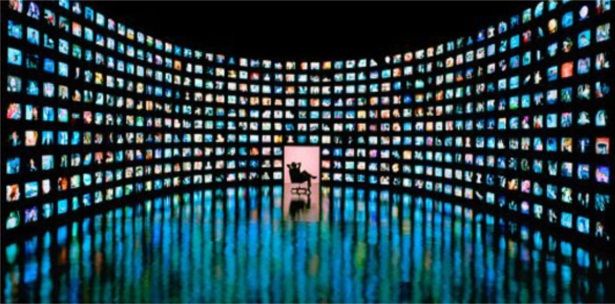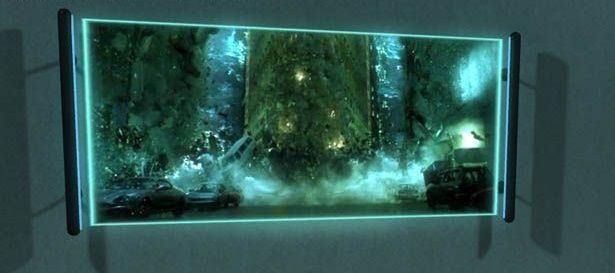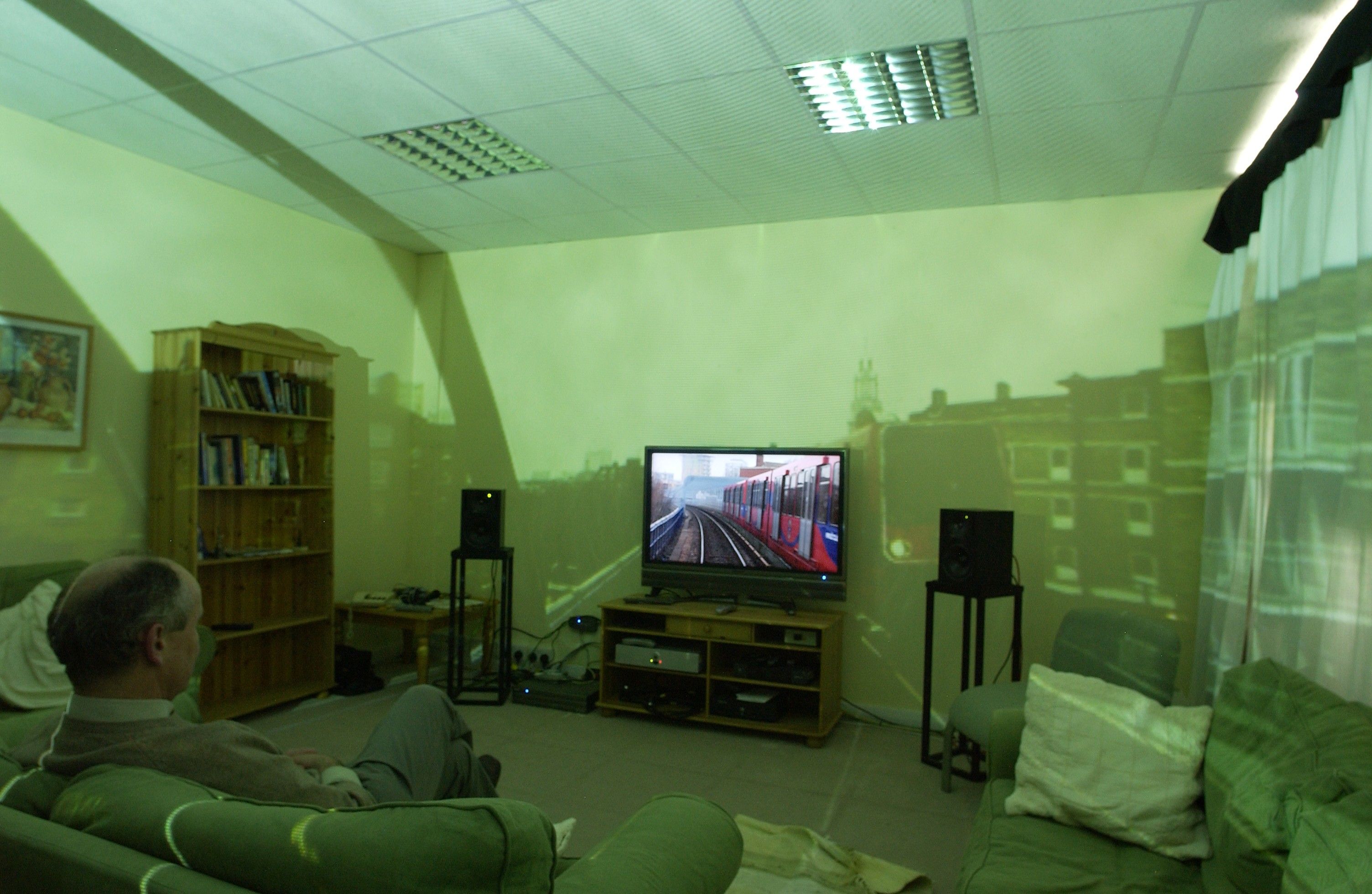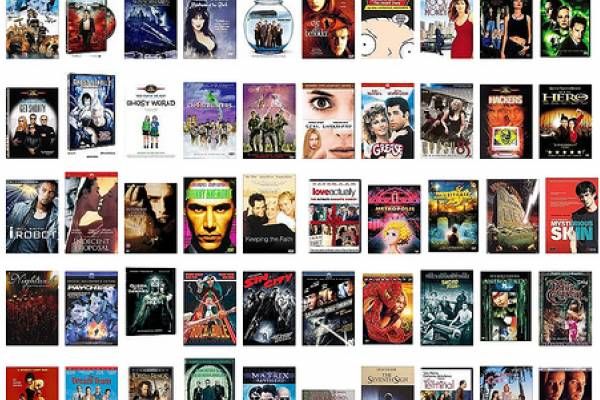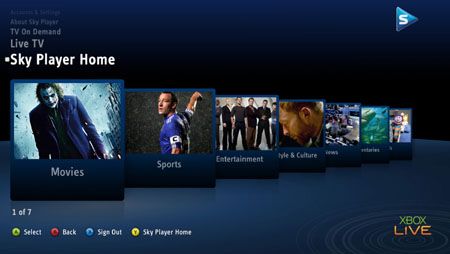Is the TV, as we know it, dead? The last few years has seen more people ditching their televisions in favour of a bigger monitor than ever before. With movie and TV downloads (legal or otherwise), streamed video content from a host of online players and a raft of catch-up services, some have speculated that it's the thin end of the wedge for the goggle box.
At the same time, we've since seen the Internet come to our TVs, widgets on our big screens and the arrival of 3D from the cinema as well, giving people a reason to stay put on the sofa. So what's the real story here and what will be the lie of the lounge in 5 years' time. As part of our Future Week season on Pocket-lint, we spoke to three industry experts to find out.
Our Screens
The truth of the matter is that while IPTV services were the preserve of the PC, there did seem a reason to ditch the telly, but one area in which our experts agreed was that streamed video-on-demand services will be absolutely huge by 2015. The saving grace for the family room screen, then has been down to a very simple thing.
"The biggest turning point has been addition of broadband to TVs, be it Wi-Fi or Ethernet. So much has and will become possible because of that", says editor of Home Cinema Digest, Jamie Carter.
Of course, connectivity isn't the only thing keeping viewers planted on the sofas of the world. The visual technology is also of a far higher standard in dedicated TVs and, with HD programming thrust under the public's nose, there's now content of a high enough quality to notice the difference. So, if 1080p and 200Hz on an LED backlit display - with maybe a twist of 3D - is the good stuff for 2010, then what of the sets of 2015? Well, for Jamie, the view is on the conservative side.
"The trouble is that the economy has taken a big blow which means that the companies themselves might not have had the budgets to develop quite what they wanted and, even if they had, the public might not be able to afford what they come up with. So, as a result, what we'll probably see is something as simple as 3D catching on by 2015, but it'll be everywhere by 2020 without any consumer choice in the matter. Any new TV you buy will just happen to have it in, just like, first, they all went flat screen, then HD Ready, then Full HD, then Freeview tuners, now Freeview HD".
"Super Hi-Vision, under whatever name it's called, probably won't be around 'till long after 2015. It's just so difficult to store and transmit at the moment. They did a demonstration in Japan of just half an hour of footage and it took them most of the night to back it up. It's just terabytes and terabytes of information to stream and we're not going to be ready for that in 5 years."
Super Hi-Vision is the current name for the resolution standard beyond 1080p HD which sits at a whopping 7680 × 4320px compared to Full HD's 1920 x 1080px. For deputy editor of Home Cinema choice, Rik Henderson, this Super HV is in fact going to be exactly what we're looking at come 5 years' time.
"Rather than 3D, the important standard in 2015 will by Super Hi-Vision or perhaps something at 4k/2k high resolution. There's actually a Super Hi-Vision channel that runs in Hong Kong at the moment, but most of it's downscaled to watch on normal or HDTVs. The thing is, you can already get 4k resolution in home projectors, like those from JVC, at the moment but we'll start seeing it as normal in standard sets too in 5 years."
So, the timescales of Henderson and Carter may not be synchronised here, but both agree that this is probably the important in-set tech of tomorrow. Quite how the marketeers go about explaining that you can actually get fuller than Full HD will be interesting unto itself.
Interestingly, both experts are dubious over the current darling of the AV world.
"I was recently converted to the ways of 3D but I'm starting to doubt it", says Henderson. "I think it'll just be a nice extra feature in TVs of tomorrow but still not a reason to buy. When we get to 2015 though, they should just have got the first commercially available auto-stereoscopic glasses-less 3D TV sets to market and at that point they might take off - once people don't have to bother with the goggles any more".
Even in Carter's more modest picture of AV technology in 2015, glasses-less 3D will be around and easily available. Why? Well, for one very good reason.
"It's all about advertising on the street. That's what the push is about. The industries will spend a lot of money getting it to work to get their products in people's faces, and, from there, it'll come into homes".
Thankfully, it's not all going to be about pushing adverts. Well, no more than it already is. If you're wondering whether LCD will have finally seen off plasma technology, well, the answer from Henderson is both yes and no.
"I believe that OLED will take over as the de facto standard by 2015. They should have managed to get it right by then so that it lasts. At the same time, they'll have probably stopped making plasma TVs".
"Panasonic has more or less got the market sown up already, but it's probably not a market that's big enough. Yes, it's the best way to do 3D at the moment but plasmas are very expensive to make and the other technologies will have caught up by then. The thing that OLED does is offer the best of plasma and LCD with such defined sharp edges and incredible colours, while only being as thick as a piece of paper. Once they've got the glass right, OLED will be away. It'll be in a similar place to LED TVs of today".
Although this seems the likely course over one timescale or other - be it Henderson's or Carter's - there is always the chance that we'll end up with something a little more out of leftfield.
For instance, now that content is recorded digitally as opposed to on film, then why should we stick to rectangular TVs? Toshiba has developed a round LCD panel to prove that it could do pretty much any shape it likes. The prototype, which was developed back in 2007, has fairly modest specs but the point is the proof. Whether they'll ever be wanted for anything other than corporate displays is another question.
A more interesting, if harder to implement, idea is one from the labs at the BBC known as the Surround TV project. Awkwardly, it requires both a flat screen and a projector set up. The idea is that the TV displays the central area of a recorded image while the the periphery is thrown from behind and against the walls of the room. It's rather like what Philips does with Ambilight only taken a couple of steps further. There's obviously some practical issues of room space and set up with the Surround TV system, but it's certainly a rough version of an AV set up that might work one day - just not in time for 2015.
Our Content
"We've spent the last 20 years turning computers into TVs, now we're turning TVs into computers".
Those are the words of Chief Evangelist (yes, that is a real job title), Richard Bullwinkle at metadata giant Rovi. The point he's making is about the way we are, and are going to be, consuming programming on our screens.
For those tech savy enough to have figured it out, video on demand is all the rage. Just about every platform, apart from a straight Freeview or Freesat service, provides one and often for no extra cost at all. You get it with your broadband, your satellite service and even your games consoles, and apparently this is only the beginning of VoD and its impact on the rest of our hardware too.
"Personally, I think PVRs will have faded out by 2015", says Henderson. "All the content you could ever want from anywhere at anytime will be available as video on demand subscription services. You just won't need to ever record anything again. Companies like Virgin Media and Sky will pioneer this because it's going to take a lot of money to be able to pull together this scope of content into one service, and no one will be able to offer it all in the same place for free".
Carter agrees but also pinpoints personal remote storage as well as streaming services.
"You might as well just record to the cloud soon - presuming the internet connection is good enough to stream HD back and forth. So, there probably won't be the need of a set top box beyond the decoder and even those are starting to be embedded in TVs. We might see cloud storage space as provided by Sky or Virgin or BT or whoever you're with".
Carter's financial model is more of a mixed approach than Henderson's all-encompassing subscription, certainly in the short term.
"We're already seeing TVs, like those from Sony and Samsung, that have services like Skype and iPlayer, and next year we could even have Project Canvas as well. Hopefully that will be a platform where we can get it all in one place. Some of it might be free, some ad-funded and some pay service".
Project Canvas is certainly aiming to get all the terrestrial channels, as well as those from Sky and possibly Virgin, for all UK users to access together but that still leaves the question for all other content around the world as well as non-broadcast videos, shows and films from the Internet as well as music and other forms of media too. Henderson's content utopia might be coming some day, but you'd have to err on the side of Carter's more conservative approach for our 5-year time scale.
The solution for the near future then could be that as described by Rovi evangelist Bullwinkle.
"Once you add the Internet into TV, you suddenly go from having to search through 200 channels for what you want to more like 2000. What we want to do is cut through this and provide a lean back, beer-in-the-hand way of watching TV and that's where recommendation services and more intelligent electronic program guides come in".
Rovi has recently begun implementing a solution into some manufacturers' sets called Total Guide which is an attempt to do this. Their software is backed up by an enormous store of film, TV and music metadata and reviews as supplied by over 300 editors worldwide. This is then sold on to the likes of Amazon, iTunes, Spotify, Pandora, Slacker, Shazam, TiVo and perhaps even Last.FM later in the year. Combine all this with social networking, either native on your screen or perhaps a handheld device, and suddenly you can even be recommended shows to watch based on what certain trusted friends of yours have been enjoying as well.
The Total Guide technology will source just about everything out there, as the name suggests, and bring you not only what's right for you but also what's possible to watch at the minute as well.
"A lot of the time, you might find that certain films have been withdrawn", explains Bullwinkle. "For instance, HBO has a clause in their deals that, when they show a film, it has to be removed from all other online and broadcast schedules for the first week they do so. So, Total Guide will know this and not offer you content that's not available. Hopefully soon, we'll be able to actually put place cards in to let people know when that content might become available to watch again if they happen to have searched for it by name".
The trick, of course, with services like Total Guide, and any VoD platform as well, is to make it ridiculously straight forward. TV is a mass market proposition and most of the public cannot be bothered to sit trying to work it out. It needs to be a case of pushing one or two buttons at the most and it has to look nice and simple on the screen too - a place where Bullwinkle feels just about every EPG falls down. He should know, as Rovi has spent the last few years buying up all the EPG providers.
"Sitting round the EPG is a rubbish family experience. Ultimately, we're not even sure the EPG belongs on the TV itself. There are TVs coming out with iPhone apps to control them, so why not have the whole EPG on your personal device as well?"
Why not indeed? One can quite easily imagine organising our own evening's entertainment on the way home, either by voice if driving or by touch on the bus or train. Our tablets and phones could quite happily communicate with our screens and probably even stream content from them as well. After all, the likes of SlingMedia already provides this kind of service.
Conclusions
So, it seems the wheels have already been set well in motion for the TV of the future. The technology and the content is already in place. The next 5 years is going to be largely about refining exactly how it is delivered. So then, what of live TV? Is there still a place for it among this VoD/IPTV explosion? Again, our experts whole heatedly agree.
"We won't have lost linear, live TV by 2015", says Henderson. "You'll never lose that simply because it's the best advert supported model and also there'll be people who just don't want to do VoD. Remember, the last of the digital switchover will only have happened in 2012".
But while, he points the financial side of the reasoning, there's also a more philosophical angle from Carter.
"Live TV will still be around because there's a certain VoD nature to it anyway. You turn on to Dave and you know pretty much what you're going to get - Red Dwarf, QI, Top Gear and Mock the Week. People don't always know that they want and these live channels account for that".
So, whether you find yourself in front of a 3D Ready, Super Hi-Vision OLED TV or not come 2015, at least you can be assured you'll have plenty of programs to choose from.
If you enjoyed this article, then head over to our Future Week homepage where you'll find a collection of features on what gadgets will be like in the year 2015.

